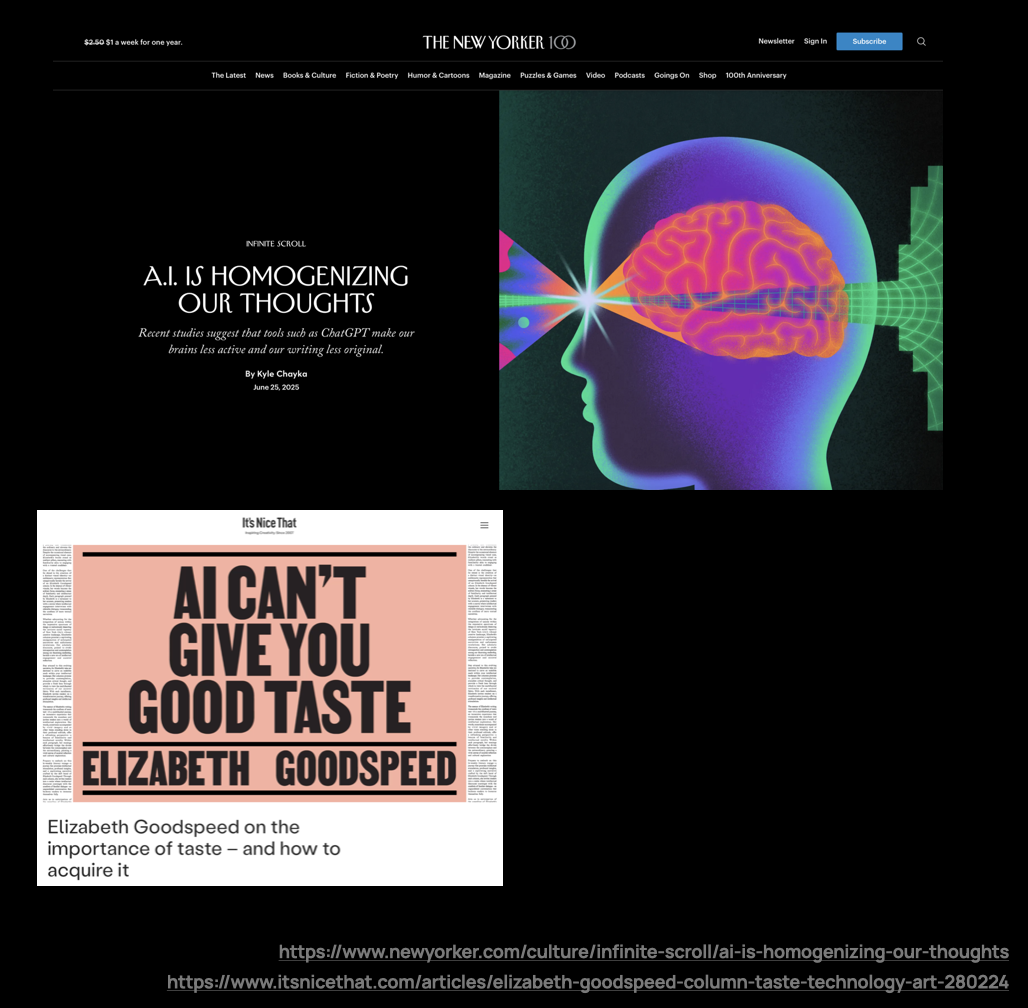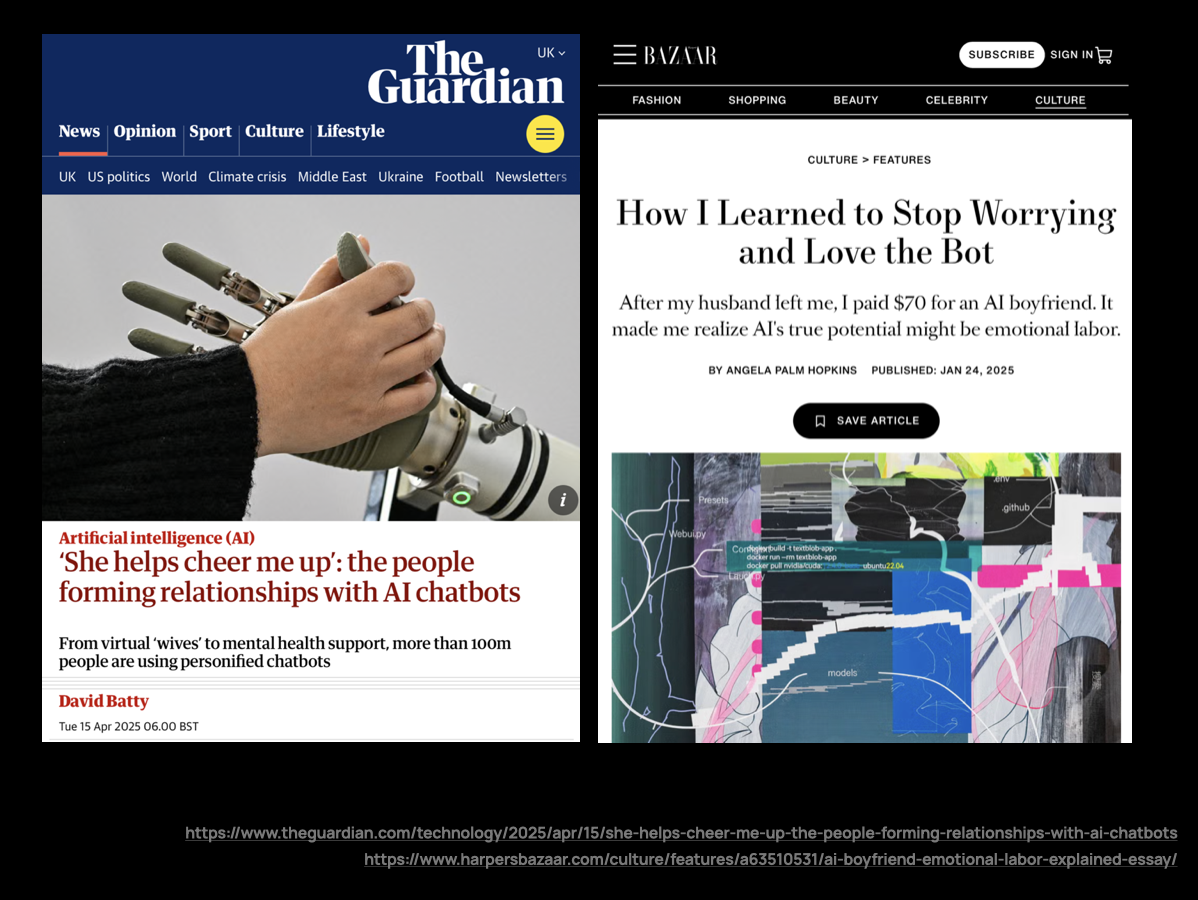008 - A rejection of AI futures(?!)
Excerpts from a discussion session with (@experimentalrealism) on the 18th of July 2025.
For my third Experimental Realism discussion session, I had the pleasure of hosting a provocation titled “A Rejection of AI Futures (?!)”—a talk and open conversation inviting participants to interrogate dominant narratives around artificial intelligence and imagine alternatives rooted in nuance.
I wanted to gather some evidence from today to make sense of the moment we are in now and ultimately to start thinking of better tomorrows as a response. [Which has been the trajectory of my Eliza project over the last few years, as I’ve noted before!]
As all good speculative designers, we shall start with Evidence, so our Extrapolation (as I note in my own Manifesto for Speculative Design Practice) is grounded in signals around us. I presented a series of signals to start the discussion.
A mundane intelligence
In the recent months, we’ve seen artificial intelligence in more ‘applied’ places beyond just a text-box to chat with.
For example, we have Amazon’s review summaries; Tinder’s “The Game Game” and the rise of many digital creation software with distributed and contextually relevant set of generative features. (Eg. Cursor, Figma Make, Visual Electric and so many more!).
AI mundanity and a narrowing of futures
But what do we lose when intelligence becomes infrastructure? What happens when we give up on the plural now in favour of a singular future? Big Tech companies love to talk about the inevitability of AI – because they stand to gain the most from it.
There are interesting critiques from people and publications which identify as ‘creative’ talking about a flattening of culture, homogenising of our thoughts, and a claim that AI can’t give us good taste.
“AI” inevitability is also an inevitability of dire climate conditions, and socially absurd futures.
Points of discussion
The following are the open questions I asked the group; followed by a list of my own answers as a Designer and Fiction-creator.
In your role, what will you have to do with ‘AI’?
Design:
Quick idea creation
Research synthesis
Testing with ’synthetic personas’
Sense-making.
Fiction:
‘Mental sparring’ for sharper ideas
Research starting points
In your role, what will you have to do against ‘AI’?
Design:
Prove that the ideas I create are better than GenAI
Convince clients of the value in people creating ideas
Incorporate smart use of current state technology
Prove that we are ahead of the curve.
Prove that my credentials, concept depth, execution, experience is better than people “vibe-designing” with Gen-AI
Fiction:
Fight a deluge (my recent favourite word) of computer generated fiction to prove what I create is worth reading, and isn’t lost in a sea of content.
In your role, what will not change?
Design:
It’s hard to say for sure isn’t it? However, I do believe that good, contextual research synthesis, idea creation, and demonstration of how those ideas can become real through prototypes and storytelling will always have value.
Fiction:
Creating poignant, unique stories with art that is inspired and hopefully inspiring.
To be as far away from ‘content’ as possible.
Also, this is an opinion from July 2025 from my perspective. Who knows how things change with time!
Until the next one.
-V.
Back to futurebabble.blog



